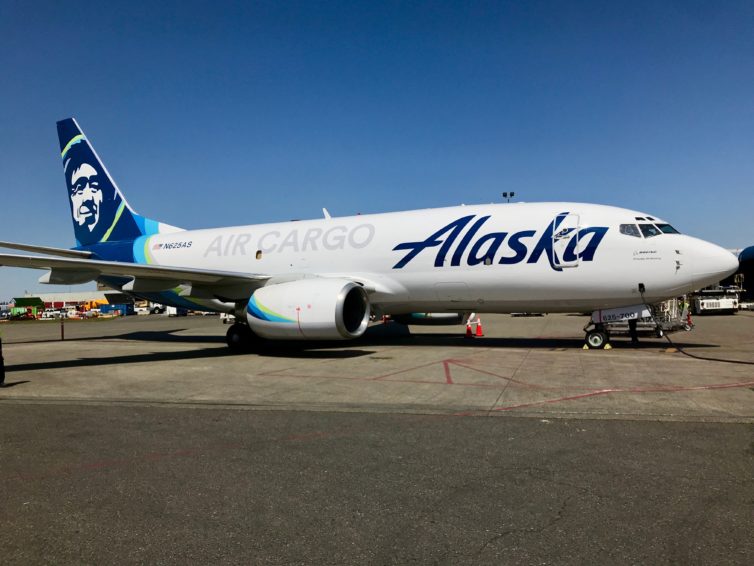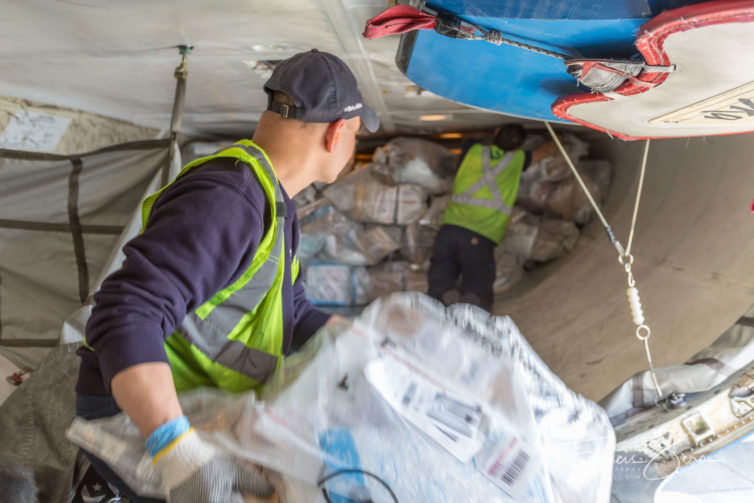
One of Alaska Airlines three newly-converted 737-700 freighters on the ramp at Seattle-Tacoma International Airport
Ever wonder about the process of loading, unloading, organizing, tracking, and planning the cargo side of a cargo flight?
Wonder no more Alaska Airlines recently invited us to watch (and then ask a metric ton of questions about) one of the airline’s new 737-700 freighters on a recent visit to Seattle-Tacoma International Airport.
“Alaska Air Cargo serves as a lifeline to many of the communities in Alaska where we fly,” said Jason Berry, managing director of cargo for Alaska Airlines.
“Offering reliable and consistent service is critical for us. The addition of our modern fleet paired with our proprietary navigation procedures allows us the ability to bring true scheduled service to the far north,” he said.

Alaska Airlines Ramp Service Agent (RSA) Carlos Arenas, foreground, prepares to pass a bag of mail to Lead RSA Metin Mehmedov. Both are working in the aft belly hold of the aircraft.
In preparation for the induction of Alaska’s first Boeing 737 MAX aircraft, the company’s strategy was to retire the remaining 400-series ’œclassics’ from its fleet. The five combis and single dedicated freighter were all 400-series aircraft.
According to Berry, those 400s were also getting extremely cycle-heavy, which meant they had so many takeoff/landing cycles that they were nearing the end of their useful life for Alaska Airlines.
“The decision to convert three 737-700 Next-Gen passenger aircraft to freighters meant we retain much of the same fleet commonality in terms of training and maintenance and it would give us the right-sized aircraft to still serve all the same communities we provide main deck cargo lift to today (-800s could not land at some of our current scheduled airports such as Adak, Kodiak, Petersburg, and Wrangell),” he explained.
And what’s become of those old cargo planes? Berry said all six were sold to leasing companies. “I believe you can find them for sale as we speak. I speculate that someone will eventually purchase the aircraft and convert them to full freighters.”